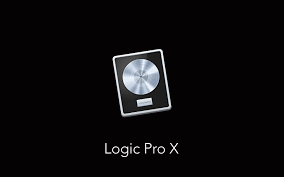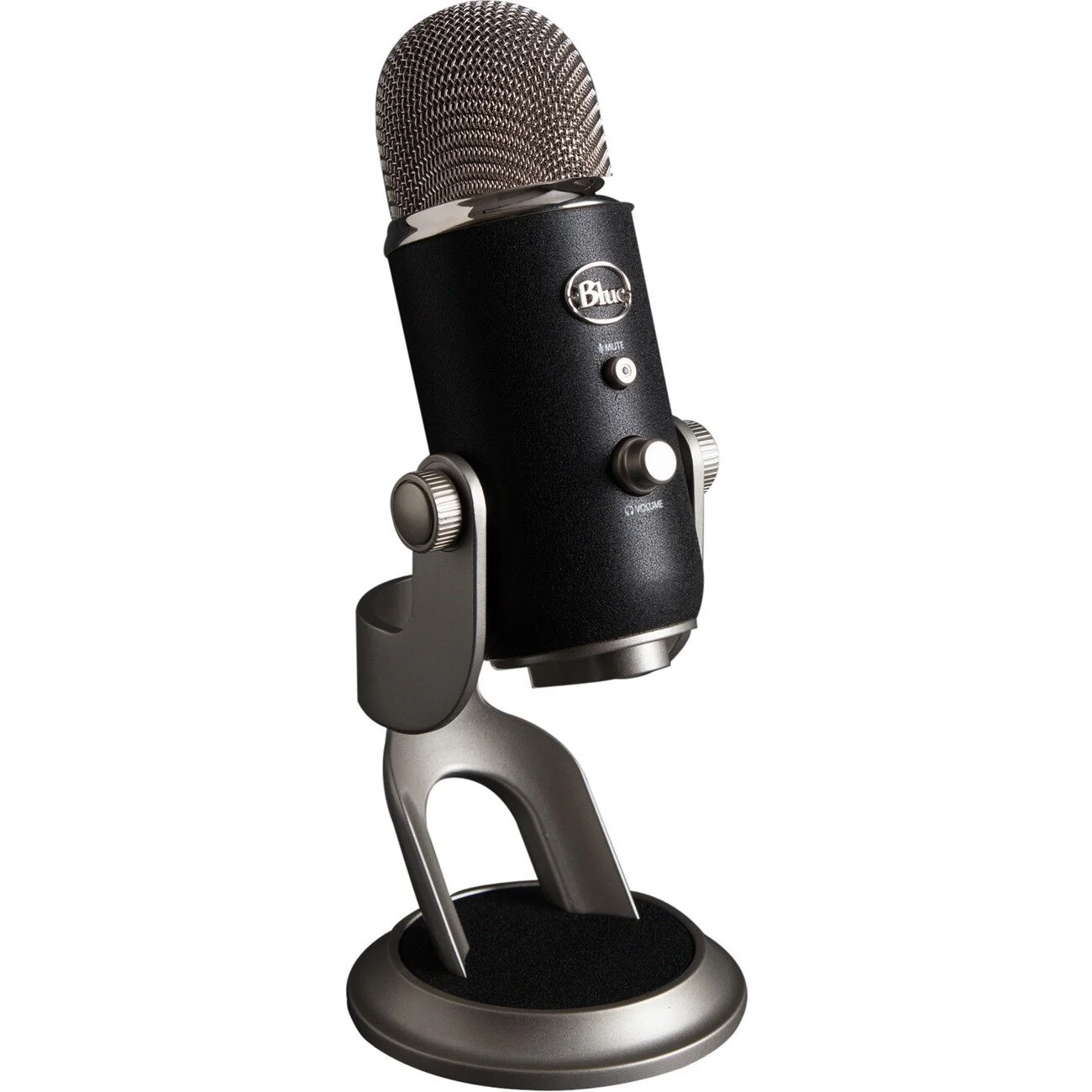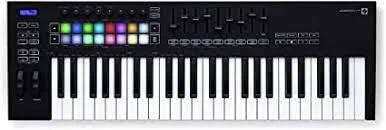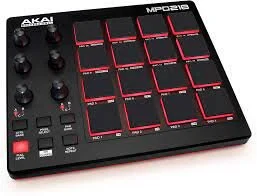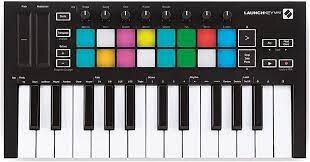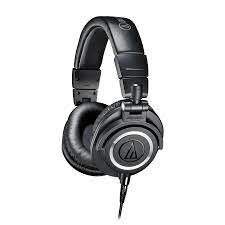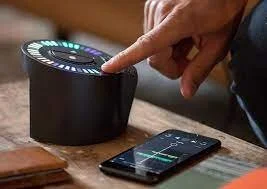How To Build a Home Studio
Something to Consider
Are you thinking about building your own music studio? A start-up studio can cost less than $1000, while a state-of-the-art studio can cost millions!
Some of the key questions you might want to ask yourself are:
What will you be using your studio for?
Do you want to use your studio professionally?
Are you just dipping your toes in?
Do you want enough space to record with friends?
Deciding how you plan to use the studio can help you decide the scope of your budget.
It’s also worth considering:
What type of music will you be creating?
Will you be recording vocals?
Are you making instrumentals?
What equipment and/or instruments will you need?
The first step in building your own music studio is knowing what you want to use it for!
Before Building
Before you start building your home studio, think about what equipment you’ll NEED to start creating the type of music you want. For example, in a Hip-Hop studio, a microphone is much more important than in an EDM studio! Start with the necessities and build around them.
Here are some examples of what you may NEED:
A computer with decent specs (Minimum requirements depend on your DAW and what you’re doing within it)
Your DAW (Digital Audio Workspace) of choice. We recommend you try-out a few to find what you like and don’t like! (Ex: Pro Tools, FL Studios, Ableton)
Microphone
Instrument(s) you play (most DAWs have instrument plug-ins that can simulate instruments you don’t have!)
The next thing to consider is your budget. Luckily, we’ll discuss a large range of options so you can pick and choose what’s best for you!
Computer
A modern computer is the most important piece of equipment in any home studio. Why? Without a good computer, even if you buy all the bells and whistles you may not be able to use them. The first choice to make when it comes to your computer is Desktop vs. Laptop. In general, you get more bang for your buck with a Desktop, but Laptops add the bonus of portability. You will also want to decide if you want a Windows or an Apple operating system as this may change what DAWs, Plugins, and Features are available for you. There are plenty great options either way; it’s all about personal preference and what you want to do with it! Before deciding on what computer to get, look at the DAW(s) you are interested in using and check their websites for minimum/recommended specs! Most DAWs will recommend at least 8 GB of RAM and a CPU clock speed of at least 3.2 GHz. (Scroll down for a list of some of our favorite DAWs!)
More and more people are building their own computers or buying custom-built computers. Although this is a great option if you know what you’re looking for, here are some recommended computers for making music:
Select Orbital Computers (Desktops & Laptops Available)
Select Mac Computers (Desktops & Laptops Available)
Dell XPS 8930 (Desktop) *Great Value*
*Keep in mind when buying desktops you may need to purchase a monitor and speakers in addition to the tower
Digital Audio Workspace (DAW)
What’s a DAW? That’s a great question! DAW stands for Digital Audio Workspace… but what does that mean? A DAW is the software program you use to produce, record, or mix music on your computer. For example, Pro Tools, FL Studios, and GarageBand are some well-known DAWs. Not all DAWs are created equal… but that’s a good thing! It gives you a wide range of developers, features, and price points to pick from! Here’s a list of some of our favorites:
Pro Tools is considered the “Industry Standard”
Pros
Found in most professional music studios (easy to bring your projects with you)
Workflow is quick and easy once you get a hang of it (lots of tutorials available)
Cons
Steep learning curve
Requires a lot of CPU and RAM (Minimum: Intel Core i5 Processor, 16 GB RAM / Recommended: Intel Core i7 or higher, 32 GB or more RAM)
FL Studios a favorite among Hip-Hop producers
Pros
Mobile App Available
Powerful Native Plugins (FL Studios is my go-to DAW for Producing)
Cons
Steep Learning Curve
Features can be easy to miss / hard to find
Ableton Live a favorite among DJs
Pros
Session View & Arrangement View are separate (create and play loops before arranging them)
Great to have on Stage! (Using a connected controlled you can play your loops straight from the session view!)
Cons
Session/Arrangement Views can be confusing at first
Can be overwhelming to less tech-savvy users
Logic Pro Apple’s premium DAW (can open projects started in GarageBand)
Pros
Large Built-In Library of Sounds & Plugins
“Logic Remote” allows you to control certain features from your iPhone or iPad
Cons
Exclusive to Apple
Steep Learning Curve
Sound Trap available on all devices
Pros
Mobile App Available
Free Option
Cons
Can’t export WAVs without a Premium Account
Learning Curve
GarageBand is free on Apple Devices
Pros
Free for Apple Users
Built-In Auto-Tune Plugin
Cons
Exclusive to Apple
Essentially a demo version of Logic Pro (might be a good place to start if you aren’t sold on Logic Pro or find it difficult to navigate)
Microphone
Go to a professional studio and you’ll find tens-to-hundreds of different types of microphones ranging from less than $50 to over $5,000! You might ask why they need so many, I mean they all just record audio, right? Yes and no. Their main objective is to record audio, yes… but the way they go about doing that can be very different from each other, each being made for it’s own unique purpose.
Depending on the type of music you’re making, you won’t need nearly this many. It’s common for rappers to find a microphone they like and stick with one or two for long periods of time. If you’re recording a band that has a drummer, a guitarist, and a singer, having multiple types of microphones to pick-up the nuances of each instrument would be of benefit to you. If you’re just starting out making music, do a little bit of research and pick a microphone(s) that would be best for your budget and style of music. Don’t stress too much you’ll be able to upgrade later if you decide to stick with it. Plus, now you’ll have some experience to see what you liked and didn’t like about your “starter mic”.
We attached some great microphones that we love for Rap and Hip-Hop Vocals at Poetic Studios below! However, if you are interested in learning more about exactly how microphones work or which microphones are best for which situations/instruments, checkout this article by Alexander Briones where he breaks down what makes microphones different from one another and why more expensive doesn’t always mean better.
Blue Yeti Pro ($229)
Great quality, multi-purpose
4 Polar Patterns (Cardioid, Stereo, Bidirectional, and Omnidirectional)
USB or XLR
Røde NT1-A ($229)
Good quality at an affordable Price
Large-Diaphragm Condenser Microphone
XLR (Requires Audio Interface)
Shure SM7B ($359)
High quality, warm vocals
Low End Frequency Roll-Off
XLR (Requires Audio Interface)
MIDI Controllers / MIDI Keyboards
What’s MIDI?
First things first… what’s MIDI? MIDI, or Musical Instrument Digital Interface, is the information standard for music machines that allows computers, DAWs, and musical hardware to turn the notes you play on your musical instrument/hardware into beautiful sounds on the DAW. MIDI is NOT a form of audio; MIDI is a form of data or information. Think binary: when you play a note, the signal becomes a 1 and tells the DAW to play the sound associated with the note. When you release it, the signal changes back to a 0 and the DAW is told to stop playing the sound. Since MIDI is information, not audio, if there is no synth, sampler, or other sound source built into the hardware, it cannot produce sound without a DAW.
What’s the difference between MIDI Keyboards and MIDI Controllers?
MIDI Keyboards are built with synths, samplers, or sound sources which allow them to make sound independent of a computer. They can also be plugged into your computer to transmit MIDI data to your DAW.
MIDI Controllers on the other hand are built without synths, samplers, or other sound sources. This means that when plugged into a computer, they can generate and transmit MIDI data, but without a DAW, there will be no sound created.
Here are some of our favorite MIDI Controllers:
Novation Launchkey 49 MK3 Keyboard Controller ($219)
Great for melodies, harmonies, and even has 16 pads that can be very useful for sampling and drums. Built in faders and knobs can be reprogramed to control various parts of your sound.
Akai Professional MPD218 16-Pad Controller ($119)
Great for sampling, creating drum patterns, and manipulating sounds. Knobs can be reprogramed to give you greater control of your sounds.
Novation Launchkey Mini MK3 Keyboard Controller ($109)
Great for melodies, harmonies, and even has 16 pads that can be very useful for sampling and drums. Built in knobs can be reprogramed to control various parts of your sound. Great for portability or if you don’t have a lot of space.
Acoustic Control
What are acoustics and what is acoustic control? Acoustics “are the properties or qualities of a room or building that determine how sound is transmitted in it.” Acoustic control is one of the most commonly overlooked steps in building your music studio. Why? Two main reasons. First, most people don’t realize that the setup of the room dictates a large portion of the sound you can achieve. In addition, people who realize the importance of acoustic control often think it’ll take thousands of dollars to properly setup their studio. Although there are high-end options available, you don’t have to spend a lot of money if you’re willing to put in a little bit of research and effort. Here is a free e-book that talks about the differences between Soundproofing a room and Treating a room.
There are infinite ways to setup your studio but the way you go about it really all depends on the sound you’re looking for. Acoustical Surfaces, Inc. gifted us this e-book that talks about some of the common noise problems people run into and some possible solutions to those problems. Don’t limit yourself to the top-grade materials if you’re just starting out. Sound absorption panels (although not the end-all-be-all) can be found for less than $1 / sq. ft on Amazon.
Speakers (Studio Monitors)
I’m gonna share a trade secret with you that’s pretty obvious but often times overlooked: your mix sounds better on a $3000 speaker system than it does on a $30 speaker system… don’t mix based only on your high-end speakers, most of your fans can’t relate! If you can make your song sound really good on a low-quality speaker imagine how it good it will sound on a top-of-the-line speaker system! If you already have nice studio monitors, consider buying a cheaper speaker to flip back and forth between. Your studio monitors may allow you to hear something the cheaper speaker isn’t making as noticeable, but the cheaper speaker is going to resemble the way your song will be heard by the majority of your fans. It doesn’t take much to get your song to sound good on consumer-grade headphones either. This is a mistake I made starting out as an engineer.
Studio Grade Headphones vs. Consumer Grade Headphones
I know you’re probably thinking, “What!? Why haven’t I been jammin’ out to my favorite songs on studio-grade headphones all my life!?” At least that’s what I thought when I first heard about studio-grade headphones, but don’t worry, they’re not meant to make music sound better… literally! Studio grade headphones are designed to reproduce audio as accurately as possible. At first glance you might think that means make the audio sound better/clearer, right? Well clearer yes, better not always. Studio-grade headphones allow you to hear more of the anomalies consumer grade headphones are designed to help mask. That’s great news inside of the studio because you can hear your song as it is and make any adjustments you’d like to make.
Outside the studio however, fans just want to hear your song in it’s best form. And I mean, can you blame them?! Consumer grade headphones help them do just that. Most of the popular headphones today have technology in-place designed to make music sound better. Companies like Beats add bass to their headphones, and Hip-Hop fans love them for this but it can be very misleading if used while mixing.
Closed Back Headphones vs. Open Back Headphones
Most people are familiar with closed-back headphones. They are over-the-ear headphones that block outside sound isolating the audio playing from the headphones. This allows for you to hear the audio more clearly in most cases however sometimes low frequencies can build up and create muddiness.
Open-back headphones are less common but can be great in the studio. Open back headphones allow noise from the room to come in giving you a more natural feel. They often times allow you to hear the song more accurately as closed-back headphones can over-emphasize low frequencies.
There’s no right or wrong answer here, it’s all going to come down to preference. At Poetic Studios we have both open-back and closed-back headphones to cater to each artists’ needs. Here are some of our favorites:
Audio-Technica ATH-M50X Studio Monitor Headphones ($149)
Closed-Back Headphones
Studio-Grade Headphones
Sennheiser HD 599 SE ($199)
Open-Back Headphones
Studio-Grade Headphones
Enhancements
There are lots of ways to improve your studio once you have it up and running, however we recommend to start with what you NEED and build up your studio as you go! Here are some ideas for enhancing your studio AFTER its up and running:
Mixing Board
Analogue Equipment
Audio Interface (Highly Recommended if your DAW is lagging)
Lighting / Decor
Back-Up Equipment and Wires (So you don’t have to wait a week for your new part when something breaks, just replace it and keep going)
Nice Speakers to Enjoy the Final Product
Varying Quality Monitors (Allows you to hear your mix on multiple types and quality of speakers)
Low Budget Portable Set-Up (~$500)
This setup is very unique because it doesn’t require a computer. Instead, you can use your mobile device! This setup incorporates new technology from Izotope, a leading developer in the industry, called the Spire Studio! The Spire Studio is an inexpensive, portable recording tool that can be used to record vocals or instruments! It comes with a built-in AI that handles most of the audio processing usually done by an engineer! This is a great option for a mobile studio that you can easily take with you wherever you go so you can quickly record whenever inspiration strikes!






